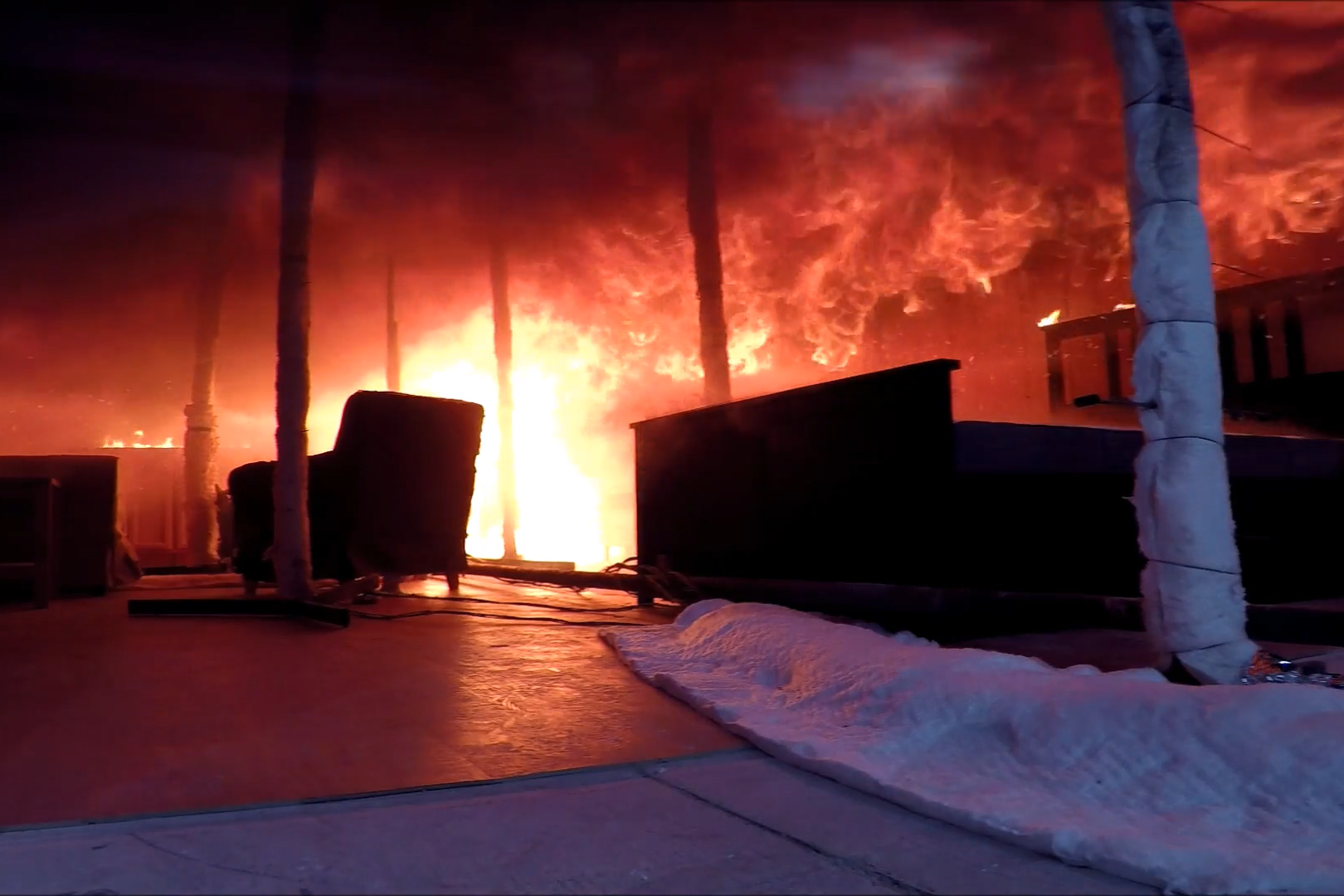Researchers Developing an AI Tool that Could Save Firefighters’ Lives
A view from NIST's Burn Observation Bubble (BOB) of a burning structure during an experiment, one minute before flashover. / Credit: NIST
By Catherine Dorrough
Researchers at the National Institute of Standards and Technology (NIST), the Hong Kong Polytechnic University, and other institutions have developed a new tool to predict flashovers up to 30 seconds before they erupt.
This could have major implications for firefighter safety. During a flashover, most of the exposed combustible items in a room simultaneously ignite. According to a news release from NIST, existing research tools to predict flashovers rely on constant streams of temperature data from burning buildings, supplemented with machine learning if and when the temperature readers succumb to the extreme heat.
The new Flashover Prediction Neural Network (FlashNet) model has outperformed five other machine learning-based tools, including one previously developed by the FlashNet research team.
NIST firefighters douse flames bursting from a building as a flashover occurs during an experiment. / Credit: NIST
“Our previous model only had to consider four or five rooms in one layout, but when the layout switches and you have 13 or 14 rooms, it can be a nightmare for the model,” said NIST mechanical engineer Wai Cheong Tam, co-first author of the new study, in the news release. “For real-world application, we believe the key is to move to a generalized model that works for many different buildings.”
Since many factors affect the way a fire behaves – including the building’s floor plan, its location, and whether doors are open or closed – the researchers implemented a type of machine learning called graph neural networks (GNN). This algorithm makes decisions based on different data points’ relationships with one another.
“GNNs are frequently used for estimated time of arrival, or ETA, in traffic where you can be analyzing 10 to 50 different roads. It’s very complicated to properly make use of that kind of information simultaneously, so that’s where we got the idea to use GNNs,” said Eugene Yujun Fu, a research assistant professor at the Hong Kong Polytechnic University and study co-first author, in the news release. “Except, for our application, we’re looking at rooms instead of roads and are predicting flashover events instead of ETA in traffic.”
The researchers put the new model through its paces by digitally simulating more than 41,000 fires in 17 kinds of buildings. While the model’s accuracy varied according to the amount of data it had to work with and the amount of lead time it sought to give firefighters, its best performance resulted in 92.1% accuracy with 30 seconds of lead time. Most importantly, when compared to five other machine learning tools, it produced the fewest false negatives – cases where the model fails to predict a flashover.
Although the results show promise, the tool is still in development. Next, the researchers plan to test the model with real-world data.
“In order to fully test our model’s performance, we actually need to build and burn our own structures and include some real sensors in them,” said Tam in the news release. “At the end of the day, that’s a must if we want to deploy this model in real fire scenarios.”
The new study has been published in Engineering Applications of Artificial Intelligence.


